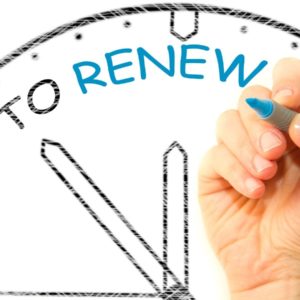If you have created a new brand name or logo, don’t forget to check it! It is very important because it can affect the safety of your brand. I will tell you how and where you can do that.
Many entrepreneurs feel that the brand name or logo they have chosen is unique, and no one else could think of it. Unfortunately, most of the time, that is not the case. More than 40,000 new trademarks are registered worldwide EVERY DAY, while the number of letters remains the same.
So before you decide on a particular name or logo, it is essential to ensure that nobody else has already registered the same trademark (or a confusingly similar one). To avoid unnecessary risks and possible losses, I advise you to check your trademark’s availability before making any investments in the brand. If it turns out that the name is already taken, it might be best to choose a different trademark.
Trademarks must be checked in all the territories where you plan to use them. In the US, use TESS. In the EU, use TMView. In my opinion, the best tool to use globally is Global Brand Database.

Why do you need to check your trademark?
First, if you choose a brand name without knowing about an earlier trademark, you might not be able to register your brand name as a trademark. An existing confusingly similar trademark is one of the main reasons why your trademark application might get rejected.
In that case, preventing others from using your trademark will be difficult since unregistered trademark protection is very limited. Besides, a registered trademark is a valuable asset for your company, which you can commercialize.
On top of that, the owner of the earlier trademark can prohibit you from using your trademark or expanding your business and even seek damages for using their trademark. You might have to do a rebranding. Whatever the outcome of the dispute, it will be very time (and money) consuming. So it is essential to check trademark availability to avoid these risks.
How to check your trademark?
To check trademark availability, you must conduct a trademark search using trademark databases. Trademarks are territorial, so the search must be performed in all the territories where you plan to register your trademark. For example, a search in the European Union requires an examination of both EU trademarks and the national trademarks of each EU Member State, as well as trademarks registered under the international system that are attributed to the European Union or an EU Member State.
You have to enter the search term in the databases and, where possible, check the box that says “Fuzzy search”, which means that the program will also show similar trademarks. You should also check various similar variations of the search term yourself.
In some databases, you can also search for trademarks by image by uploading an image with the trademark. The program will compare it to the trademarks found in the database (eSearch plus, Global Brand Database, for some countries, also TMView).
Trademarks are registered for specific goods and services, so you must mark the relevant classes of goods and services according to the Nice Classification. You should also mark that the search shows the trademarks that are active – filed or registered.
The key is to look for trademarks that are:
- registered for the same or related goods and services as yours
- similar enough that there is a likelihood of confusion.
Trademarks can look similar, sound similar, and have a similar overall impression. For example, XCEED and X-SEED are spelled differently, but these trademarks have been found to be phonetically confusingly similar.
It should be noted that the similarity of the marks must be assessed from the consumer’s point of view – think about whether there is a possibility that the trademarks could be perceived as related by the consumer.
I also recommend that you check whether an identical trade mark is registered anywhere in the world because if it has become widely known, it will have a wider scope of protection.
Only filed or registered trademarks appear in the databases, so check whether there are no unregistered trademarks by searching online on search engines.
Tools for conducting a trademark search
Use national trademark databases to look for nationally registered trademarks. For US trademarks, use the USPTO’s Trademark Electronic Search System, or TESS. If you are checking a graphic trademark, like a logo, you first need to look up the design code in USPTO’s Design Search Code Manual.
Use Madrid Monitor to search for trademarks applied for and registered internationally under the Madrid Agreement or its Protocol.
TMView is a tool that can be used to search the International Register, the European Union Register, and the national registers of the Member States of the European Union and many other countries.
Global Brand Database can be used to search the International Register, the European Union Register, and the national registers of the Member States of the European Union and many other countries. You can also search by image.
eSearch plus can be used to search for EU trademarks, and it allows you to search by image.
If in doubt, consult a trademark attorney
While it’s somewhat easy to look for identical trademarks, the process of finding confusingly similar trademarks is not as straightforward. Additionally, correctly evaluating the risk takes a lot of knowledge and experience. It might not be clear how to interpret your search results.
If you are not sure, I suggest that you consult a trademark attorney to conduct the search for you to be certain that the trademark is free to use and register.





